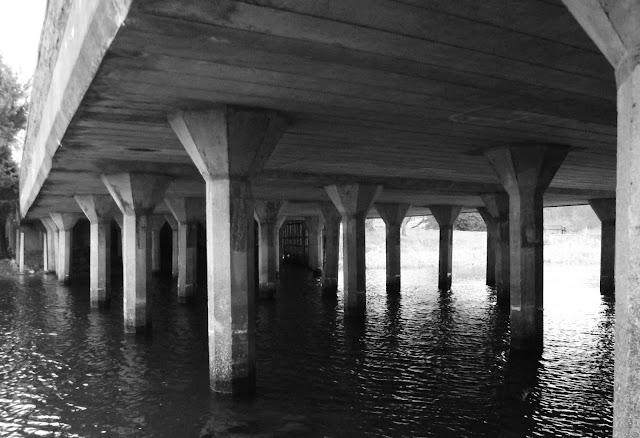Archaeology : Architecture : Art : Cold War : Curiosities : Design : Eccentricities : Ekco : Engineering : Industrial Heritage : Military : Petroliana : Photography : Shed Wonders : Transporter Bridges : Vintage Technology
27 January 2017
Enniskillen - Eulerian Bridges
Located between the Upper and Lower parts of Lough Erne, Enniskillen is an island town, the only one in Ireland. There are eight bridges. Each vertex of the network of these has an even degree. It is thus possible to make an Eulerian walk, crossing each bridge once only, to return to one's start point. Built in 1885, West Bridge is the oldest.
Working clockwise, to the north-east of the island is Johnston Bridge, completed in 1954. This is in two sections (above and below), linked by Cherry Island. The bridge was strengthened in 2015-16.
Queen Elizabeth Bridge, also of 1954, relieves the adjoining East Bridge.
East Bridge dates from 1892. Its eastern end intersects with that of Queen Elizabeth Bridge.
South of this is the modern Wellington Road Bridge, which carries the A4 bypass.
The two bridges to the south of the island are modern footbridges. The first of these crosses to the Erneside shopping centre. It was installed in 1989.
The second, Millennium Bridge, joins the island to the Derrychara area.
Finally, Castle Bridge was completed in 1983 to provide relief to the nearby West Bridge. It carries the other end of the A4 bypass.
Labels:
Curiosities,
Engineering
Enniskillen - Desmonds
Desmond and Sons was a Drumahoe-headquartered clothing company. Founded in 1885, it was Northern Ireland's largest private sector manufacturing employer, with over 3,000 staff across ten textile factories.
Dangerously, since the 1960s Desmonds' sole customer was the retailer Marks and Spencer. In its final five years the company moved all its manufacturing operations to joint venture facilities in Bangladesh, Sri Lanka, and Turkey.
The Enniskillen factory closed in 2000. In 2004 M&S switched to direct supply from the overseas suppliers, and Desmonds went into liquidation. The 4.6 acre site is due to be levelled and redeveloped for housing.
Labels:
Architecture,
Industrial Heritage
16 January 2017
Llyn Brianne - Dam Impressive
The Llyn Brianne dam was built as part of the River Towy Scheme, about six miles downstream from the river's source. The reservoir holds over 13,400 million gallons when full, and supplies drinking water to much of south-east Wales.
The dam has a core formed of nearly 14 million cubic feet of clay, protected by rockfill to both faces, nearly 60 million cubic feet extracted from immediately local sources. It is the largest clay core dam in the world.
The dam crest is about 950 feet long, and about 300 feet high, the tallest in the United Kingdom. It is accessed by an unusual bridge (above) that crosses a monumental spillway, the largest in Europe, and a favourite with extreme kayakers. A second bridge (below) crosses the lower end of the spillway.
The reservoir has a maximum depth of approximately 275 feet, and a surface area of circa 530 acres. It is fed from a catchment area of roughly 22,000 acres. Just one unoccupied farm was inundated when the reservoir was filled.
The principal contractor was Wimpey Construction, and the dam was formally opened on 15 May 1973. The spillway was raised by about three feet in 1996 as part of construction of a hydroelectric facility at the foot of the dam. 4.6 megawatts of electricity are produced from the three turbines.
Labels:
Design,
Engineering


















